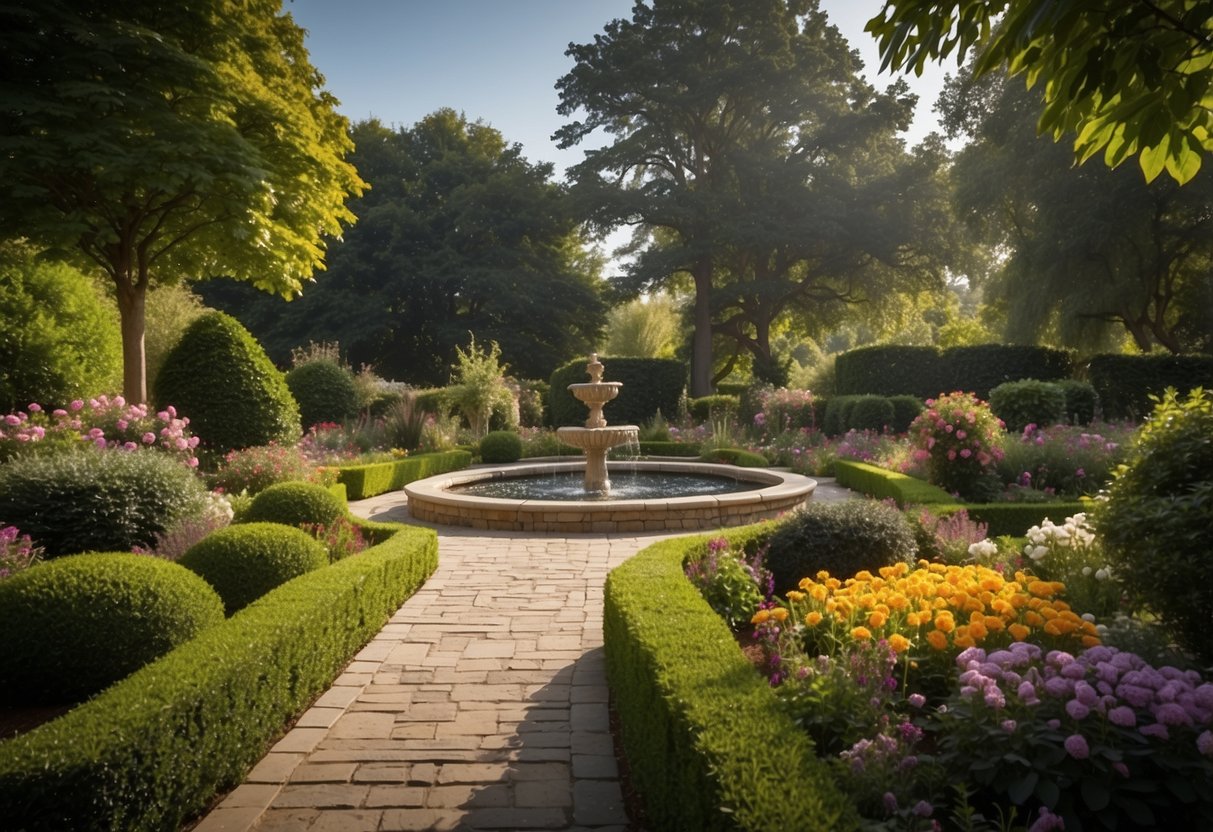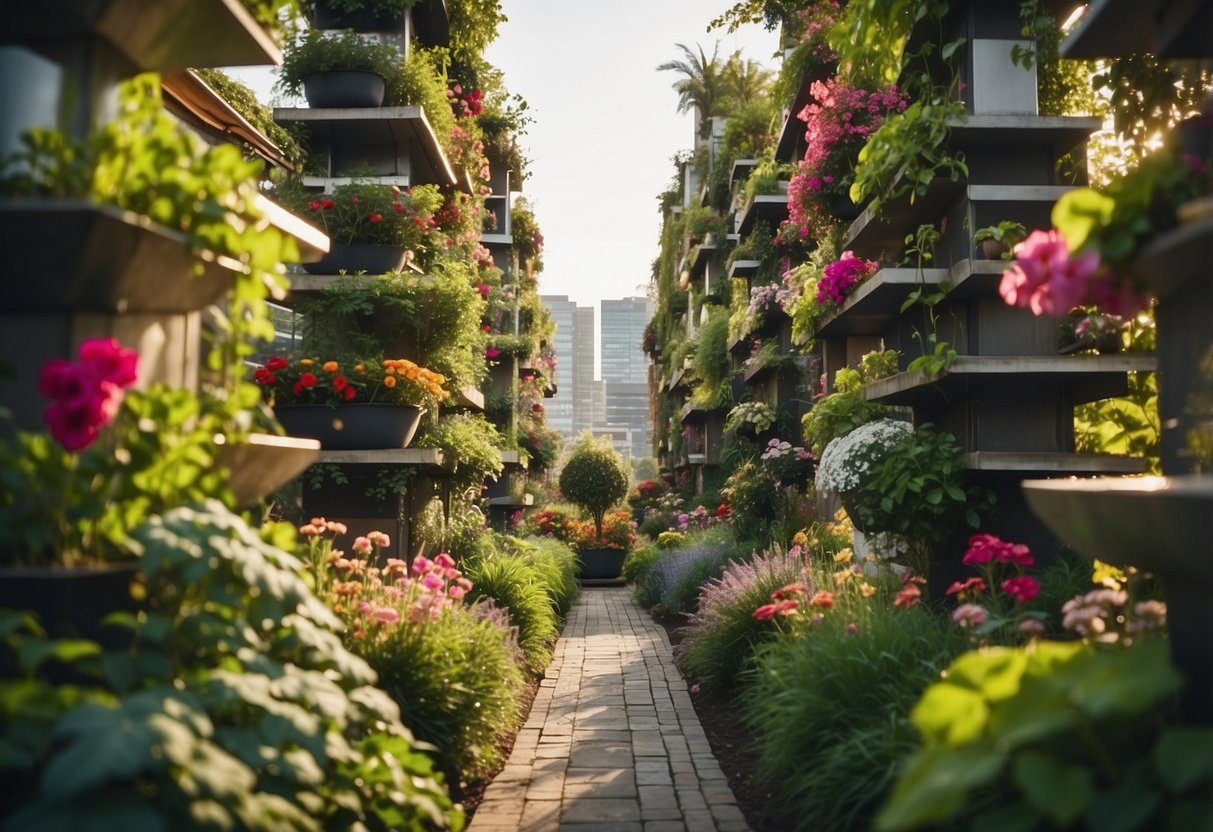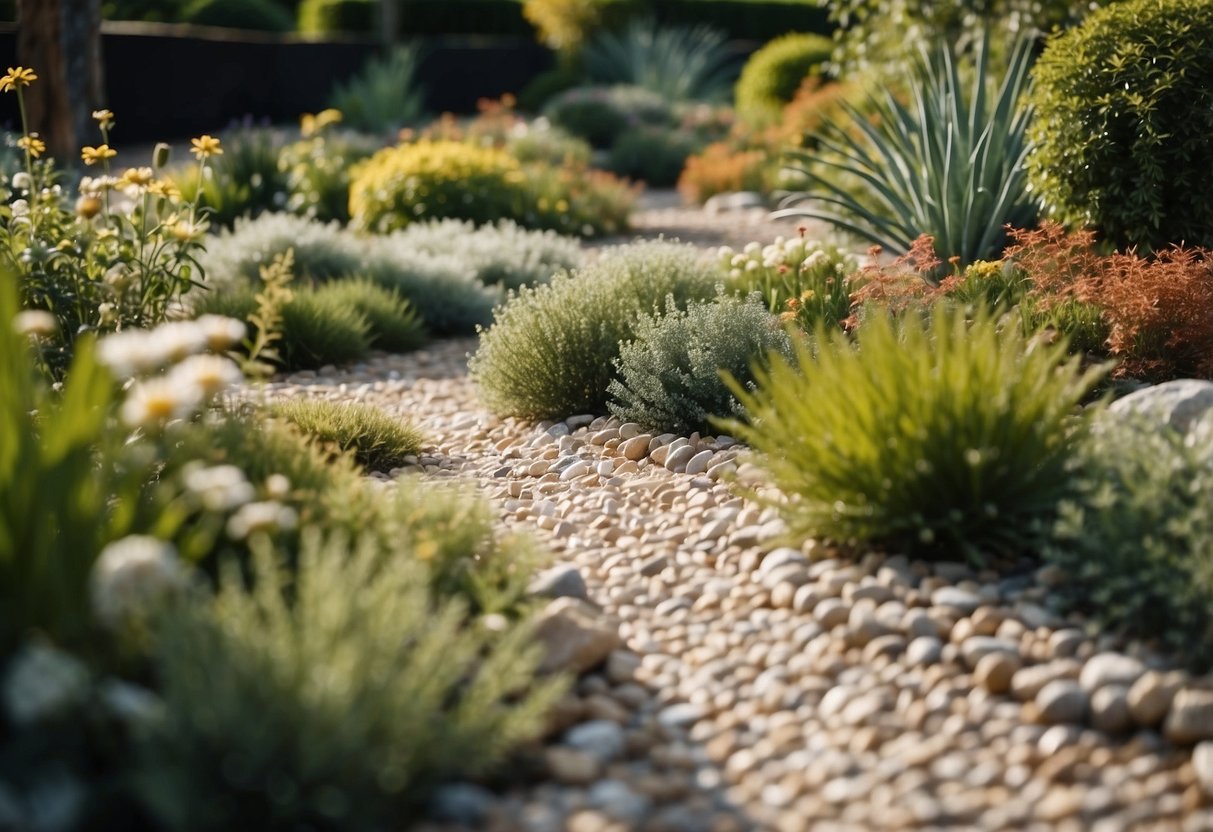Garden Ideas for Large Garden: Transform Your Spacious Yard
Dreaming of turning your large garden into a beautiful oasis? You’re in the right place. Exploring various garden ideas can help you maximize your space and create a sanctuary that brings joy and peace. Discover the best garden design tips to transform a spacious plot into a stunning landscape.

There are countless possibilities for landscaping a large garden to suit your needs and preferences. Whether you want to attract wildlife, create cozy outdoor areas, or showcase a blend of textures and colors, there’s an idea that will fit your vision perfectly.
1) Vertical Gardening Towers

Vertical gardening towers are perfect for large gardens. They help save space by growing plants upward.
You can use them to grow herbs, flowers, or even strawberries. These towers are easy to set up and maintain.
Consider using a Flower Tower’s free-standing planter. It’s tall, slim, and fits well in any part of your garden.
2) Zen Garden with Sand and Stones

A Zen garden with sand and stones can turn your large garden into a peaceful retreat. Use sand to symbolize water and create calming patterns. Raking the sand in wave-like lines or geometric shapes can be a meditative activity.
Choose different sizes and shapes of stones to add visual interest. Arrange them thoughtfully to emulate a natural landscape. Consider placing a stone centerpiece to serve as a focal point. Include some greenery to bring a touch of nature to your serene space. For more ideas, visit zen garden ideas.
3) Butterfly and Hummingbird Garden

Creating a garden that attracts butterflies and hummingbirds is both rewarding and beautiful. Choose bright, colorful flowers such as bee balm and butterfly weed. These flowers provide plenty of nectar for your winged visitors.
Consider adding plants like garden phlox, catmint, and aster to keep the garden blooming from summer to fall. You can also include a small birdhouse to make your garden even more inviting. This combination ensures a lively and vibrant garden all season long.
For more ideas, you can explore design tips from Better Homes & Gardens.
4) Water Fountain Feature

A water fountain can transform your large garden into a tranquil paradise. You might consider an Asian-Theme Water Fountain, which adds simple and appealing style with its straight lines and bubbling water.
For a personal touch, try a DIY Water Fountain made from items like iron teapots or old whiskey barrels. These unique creations bring charm and character to any garden space.
For a classic look, the Little Monk Fountain offers a dignified design that fits well in rock gardens or on pedestals.
5) Raised Vegetable Beds

Raised vegetable beds are a fantastic option for your large garden. They make planting and harvesting much easier on your back. You can also control the soil quality better.
These beds can be designed in various styles to fit your garden’s aesthetic. Explore different designs to find what works best for you.
Growing vegetables like kale, carrots, and tomatoes in raised beds helps them thrive. Remember to rotate your crops with the seasons. Learn more about seasonal vegetables.
Raised beds also improve drainage, which can help your plants stay healthy and strong.
6) Herb Spiral Garden

An herb spiral garden is a fantastic idea for large gardens. It helps you maximize vertical and horizontal space.
You can build the spiral with different materials like bricks, rocks, or recycled items.
The spiral design allows for various herbs to thrive, as it provides different conditions for each plant.
Visit this guide to learn more.
7) Outdoor Seating Area

Creating an outdoor seating area is a great way to enjoy your garden. You can set up a cozy garden bench on a shady path in a wooded area. This spot is perfect for relaxing with a book.
Try colorful deck chairs surrounded by potted plants. This adds a pop of color and makes for an inviting space.
Consider a lattice-covered patio. It provides shade and a charming spot for dining or lounging. With wisteria growing over the top, it creates a beautiful retreat.
For a more intimate setting, a sunken patio can be ideal. You can build seating into the surrounding walls and soften them with tall ornamental grasses. This design is especially effective for a sloped backyard. It feels private and cozy, perfect for spending quiet moments or having conversations.
Another inviting option is a front porch surrounded by a large garden bed. Add a few chairs and a small table. This is a lovely place for morning coffee or evening tea.
Outdoor seating areas don’t have to be extravagant. Even a simple garden lounge chair surrounded by plants can make for a wonderful spot to unwind.
8) Treehouse Retreat

Turn your large garden into a magical escape with a treehouse retreat. A simple wood log playhouse with a ladder and slide can be perfect for kids. For adults, consider a treehouse with a hot tub and mini kitchenette, creating a cozy getaway.
Imagine enjoying your morning coffee in a treehouse surrounded by nature. It becomes a unique spot for relaxation and fun. You can find many treehouse ideas to fit your style and space.
9) Wildflower Meadow

Planting a wildflower meadow in your large garden can create a vibrant and lively space. Wildflowers like black-eyed Susans, butterfly weed, and wild asters offer a beautiful mix of colors and attract many beneficial pollinators.
You’ll want to plant your wildflower seeds when the soil temperature is below 45°F (7°C), ideal during fall in colder regions. Simply scatter the seeds and lightly rake them into the soil.
Mix in some wild grasses to add texture and keep the meadow looking lush. With minimal maintenance, you’ll enjoy a stunning, natural garden area.
For more detailed advice, visit Homes & Gardens.
10) Low Maintenance Gravel Garden

A gravel garden is perfect for a large backyard. It’s low maintenance and water-wise. Gravel pathways around flower beds keep everything neat and mud-free.
Plants like cacti and succulents thrive in gravel gardens. They require little water and look great all year round.
Choose a sunny spot and remove any weeds. The gravel helps prevent new weeds from growing and retains moisture. For ideas, check out these 50 Gravel Garden Ideas.
Designing Your Large Garden

Designing a large garden can be an exciting project. To get started, you need to create a layout plan, carefully select the right plants and trees, and think about adding hardscaping elements for both beauty and functionality.
Creating a Layout Plan
Begin by sketching out a layout. Use graph paper to easily map out your space. Divide the garden into smaller sections to make the project feel more manageable. Consider using straight or curved rows, raised beds, or a combination of both. This will help visualize where everything will go.
Think about the overall flow. Pathways should be easy to navigate and connect different areas like flower beds, vegetable patches, and seating zones. Make sure to leave enough space for walking and working comfortably.
Selecting Plants and Trees
Choose plants and trees that suit your climate and soil. Investigate whether the plants you want to use need full sunlight or partial shade. This will ensure they grow well in the spots you place them. Rotating crops can help prevent disease and nutrient depletion.
Focus on a mix of annuals and perennials. Annuals provide vibrant colors, while perennials return every year, reducing the need for replanting. Consider including native plants, as they typically require less maintenance and are better suited to local conditions. Adding pollinator plants can attract beneficial insects to your garden.
Incorporating Hardscaping Elements
Hardscaping elements add structure and interest to your garden. Think about installing pathways, patios, or retaining walls. Pathways can be made from materials like gravel, brick, or concrete paving slabs, offering both functionality and aesthetic appeal.
Water features like fountains or small ponds can create a calming atmosphere. Raised beds not only look attractive but also make gardening easier and more accessible. Benches, pergolas, and garden arches can provide seating areas and focal points. Make sure these elements blend well with your plant choices and garden layout, creating a cohesive look.
Enhancing Your Garden with Water Features

Adding water features like ponds and fountains can transform your garden by creating a peaceful atmosphere and attracting wildlife. These additions can also serve as striking focal points in your outdoor space.
Benefits of Ponds and Fountains
Ponds and fountains bring a sense of tranquility to your garden. The sound of water flowing from a fountain or a waterfall can be incredibly soothing. A well-placed pond can also be a focal point that draws the eye and enhances your garden’s overall design.
Ponds can attract various forms of wildlife. Birds, dragonflies, and even frogs may make their homes around your water feature. This can boost the biodiversity in your garden and make it more vibrant. Moreover, ponds provide a natural habitat for fish, which can add movement and life to the water.
Fountains, especially self-circulating ones, can fit into smaller spaces. They are great for courtyards and patios too. They require less maintenance compared to larger ponds. They also help in cooling the air around them, making your garden a more pleasant place to relax.
Water Feature Maintenance
Maintaining water features doesn’t have to be daunting. Regular cleaning is crucial to keeping ponds and fountains looking their best. Remove debris like leaves and twigs from the water to prevent buildup and algae growth.
For ponds, check the water levels regularly and top up if necessary. Using a pump to keep water circulating helps prevent stagnation and reduces mosquito breeding. You might also need to skim the water surface and clean the filters to ensure the pump works efficiently.
Fountains need less maintenance but still require some attention. Clean the fountain pump and basin periodically to avoid clogs. Using distilled water can minimize mineral deposits and keep your fountain operating smoothly.
Regular care and attention can ensure that your water features remain a beautiful and soothing part of your garden for years to come.







